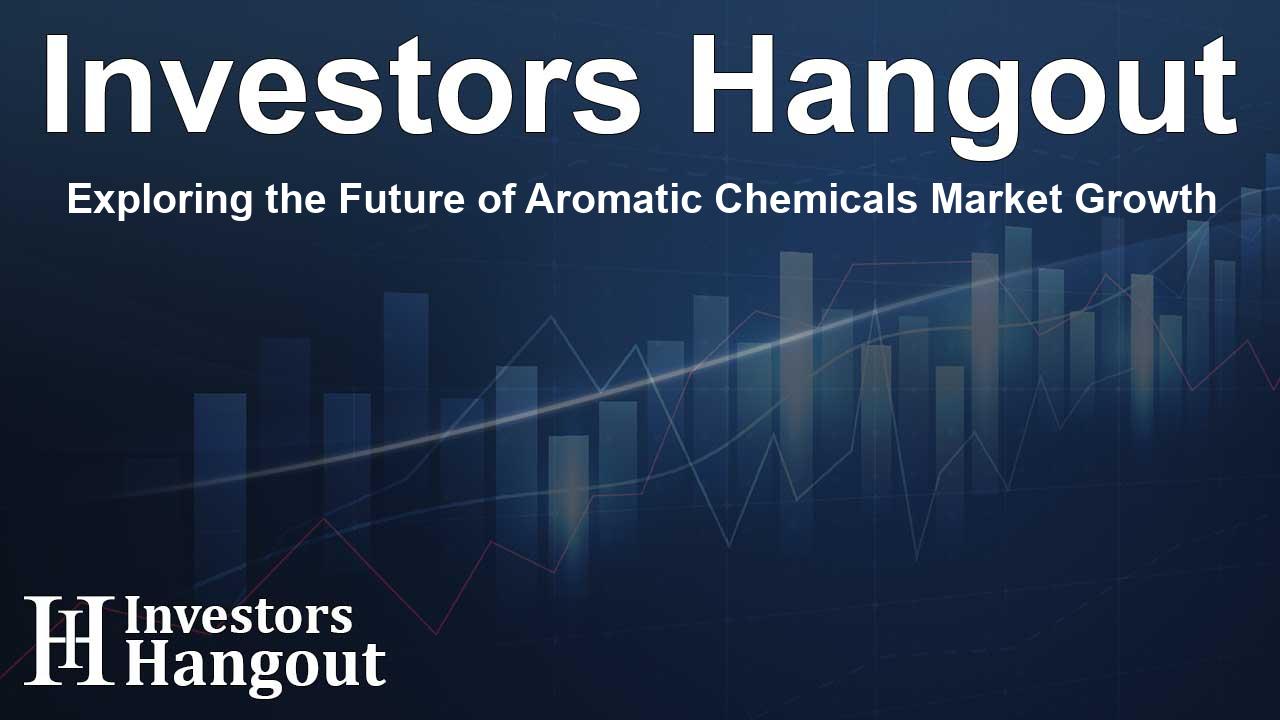Exploring the Future of Aromatic Chemicals Market Growth

Aromatic Market Overview and Growth Potential
Aromatic compounds, characterized by their unique benzene rings, play a crucial role in various industries due to their stability and versatility. With an anticipated market valuation projected to reach USD 40.48 billion, the aromatic market is gearing up for remarkable expansion. The driving force behind this growth is largely attributed to the increasing demand for aromatic chemicals in the polymers and plastics sectors, alongside the push for innovation in packaging and the ongoing trends in urbanization and industrialization.
Current Market Trends and Future Forecasts
According to recent analyses, the aromatic market was valued at approximately USD 26.38 billion and is expected to experience a growth rate of 5.50% CAGR. This increase underscores significant trends such as the rising consumption of benzene, toluene, and xylenes across various major industries including paint and coatings, pharmaceuticals, and chemicals. As the demand for environmentally friendly products and sustainable practices escalates, aromatics' role is becoming increasingly prominent.
Market Key Segments
To better understand the dynamics of the aromatic market, it is essential to break it down by type and application. The market is segmented into key types such as P-Xylene, O-Xylene, Toluene, and Benzene. Each of these categories plays a vital role in different applications.
Aromatic Products and Their Applications
In terms of applications, additives and solvents represent the primary uses of aromatic compounds. The additive segment is expected to capture the largest market share due to its essential role in enhancing the properties of lubricants, coatings, and plastics. Meanwhile, solvents derived from aromatic compounds are the backbone for various industrial applications, emphasizing the versatility of these chemicals.
Performance and Growth Drivers
The growth drivers of the aromatic market are numerous. A primary factor is the surge in demand from end-user industries such as automotive, packaging, and pharmaceuticals. The plastics industry, for instance, heavily relies on aromatic compounds as feedstocks for manufacturing a wide array of products. Similarly, the increasing focus on lightweight materials and fuel efficiency is driving further exploration into the utilization of aromatic-derived chemicals.
Regional Analysis and Market Landscape
The Asia-Pacific region is anticipated to lead the global aromatic market, thanks to its robust packaging and automotive output coupled with a booming consumer goods market. Rapid urbanization and industrial growth are fostering an environment ripe for aromatic market progression. Conversely, regions like North America and Europe are also expected to contribute significantly as they adapt to these changing market demands.
Pharmaceutical firms continue to depend on aromatic compounds for drug synthesis, while the cosmetics industry utilizes these chemicals for vital ingredient formulation, illustrating the broad applicability of aromatics across consumer markets.
Leading Players in the Aromatic Market
Several key players dominate the aromatic chemicals landscape, including BASF SE, LyondellBasell Industries, Sinopec Corporation, and ExxonMobil Chemical, among others. These companies are continuously innovating and developing strategies to maintain their competitive edge and adapt to changing market needs.
Future of Aromatics
The aromatic chemicals market is positioned for vigorous growth, fueled by the high demand for innovative materials and sustainable practices across various sectors. As industries evolve and improve upon traditional practices, the reliance on aromatic compounds will likely intensify. This paints an optimistic picture for investors and stakeholders within this sector, promising exciting developments in the years to come.
Frequently Asked Questions
What drives the growth of the aromatic market?
The growth is driven by strong demand for aromatic chemicals in industries such as pharmaceuticals, automotive, and packaging.
What is the expected market size of aromatic compounds?
The aromatic market is projected to reach USD 40.48 billion by 2034, with a CAGR of 5.50%.
Which regions are dominating the aromatic market?
The Asia-Pacific region is expected to lead due to its expanding packaging and automotive industries.
What are the primary applications of aromatic chemicals?
Aromatic chemicals are primarily used as additives and solvents in various applications including lubricants, coatings, and pharmaceuticals.
Who are the key players in the aromatic market landscape?
Notable players include BASF SE, LyondellBasell Industries, and Sinopec Corporation, known for their innovations in the sector.
About The Author
Contact Dylan Bailey privately here. Or send an email with ATTN: Dylan Bailey as the subject to contact@investorshangout.com.
About Investors Hangout
Investors Hangout is a leading online stock forum for financial discussion and learning, offering a wide range of free tools and resources. It draws in traders of all levels, who exchange market knowledge, investigate trading tactics, and keep an eye on industry developments in real time. Featuring financial articles, stock message boards, quotes, charts, company profiles, and live news updates. Through cooperative learning and a wealth of informational resources, it helps users from novices creating their first portfolios to experts honing their techniques. Join Investors Hangout today: https://investorshangout.com/
The content of this article is based on factual, publicly available information and does not represent legal, financial, or investment advice. Investors Hangout does not offer financial advice, and the author is not a licensed financial advisor. Consult a qualified advisor before making any financial or investment decisions based on this article. This article should not be considered advice to purchase, sell, or hold any securities or other investments. If any of the material provided here is inaccurate, please contact us for corrections.
